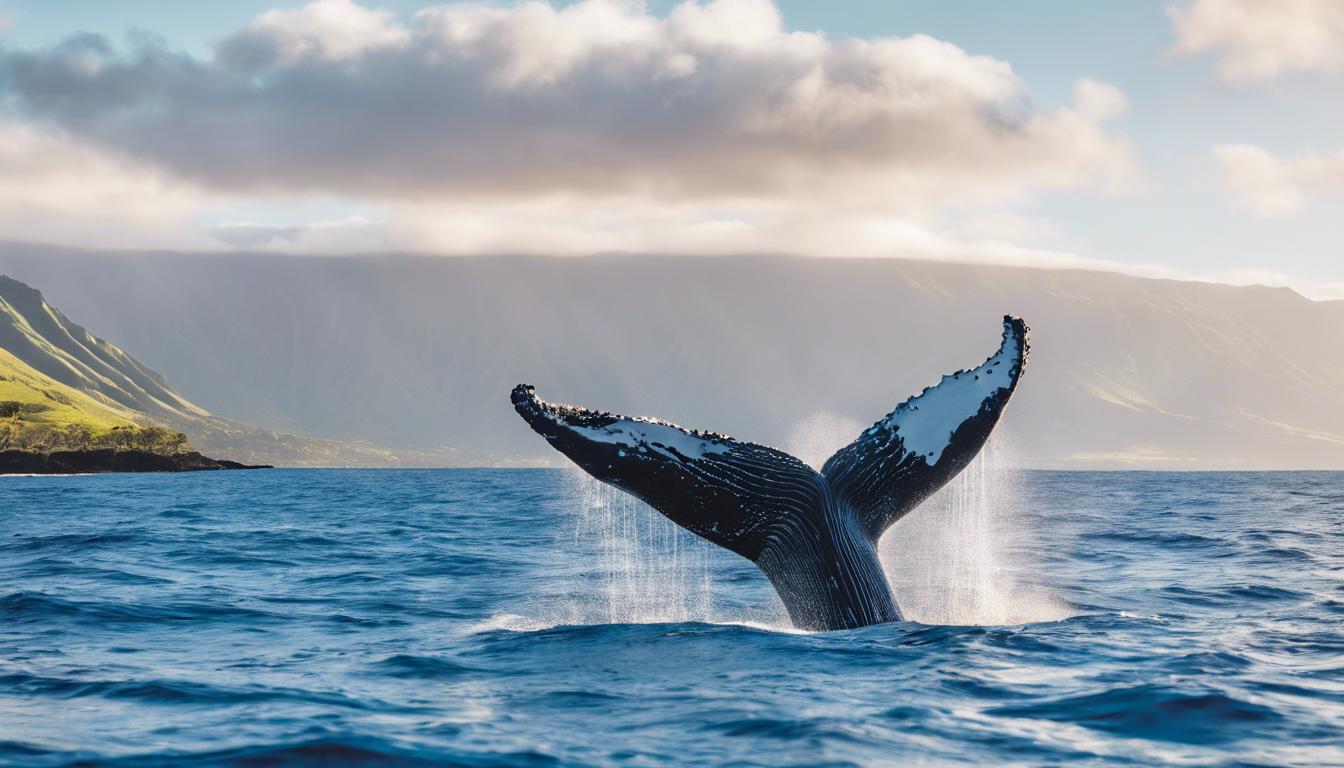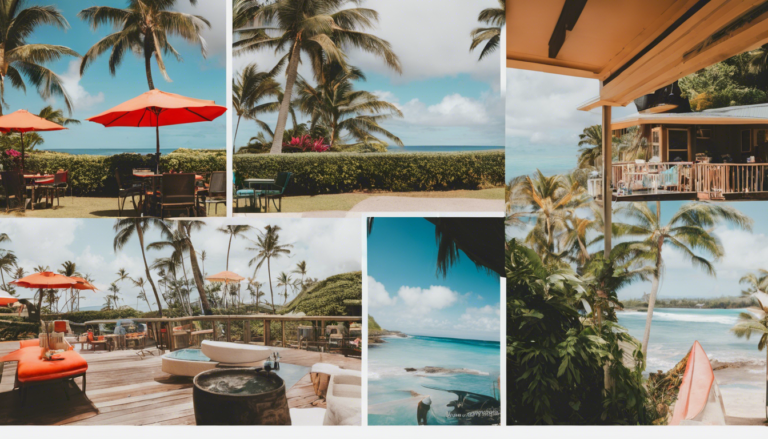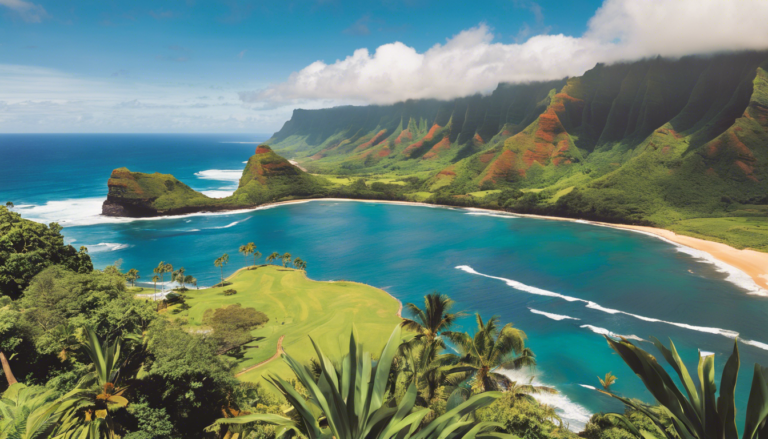If you’re dreaming of an unforgettable adventure, look no further than whale watching in Maui.
This tropical paradise not only offers breathtaking beaches and stunning sunsets, but it’s also a prime location for witnessing the majestic humpback whales during their annual migration.
In this ultimate guide, we’ll dive into everything you need to know about experiencing this incredible spectacle—from understanding whale migration patterns to the best times and spots for viewing.
So, grab your sunglasses and let’s get ready to make some amazing memories!
Key Takeaways
- Whale migration patterns in Maui are crucial for timing your visit.
- The best months for whale watching in Maui typically span from December to April.
- Expect breathtaking sightings and knowledgeable guides on a whale watching tour.
- Preparing for your trip with the right gear enhances your whale watching experience.
- Supporting conservation efforts is key to maintaining Maui’s whale habitats.
Understanding Whale Migration Patterns
If you’re planning a trip to Maui, understanding whale watching is key to making the most of your experience on this beautiful island.
Every year, from December through April, humpback whales migrate to the warm Hawaiian waters, providing a spectacular opportunity for visitors to witness these majestic creatures up close.
The best times for whale watching in Maui are typically from late morning to early afternoon when the waters are calmer and visibility improves.
Popular spots include Lahaina Harbor and the waters around Kaanapali, where tour companies offer guided trips that range from a few hours to day-long adventures.
On a typical whale watching tour, expect to see these incredible whales breach, spout, and maybe even dance with their calves, all while learning more about their behavior and conservation efforts from knowledgeable guides.
To enhance your whale watching experience, bring a good camera, pack layers (as it can get breezy on the water), and remember to keep a respectful distance to avoid disturbing the whales.
Moreover, participating with eco-friendly operators helps support important conservation efforts, ensuring that these magnificent animals can thrive for generations to come.
So grab your binoculars, set your expectations high, and get ready to connect with nature in one of the most breathtaking settings on Earth!
Best Times and Spots for Whale Watching in Maui
When it comes to whale watching in Maui, understanding the migration patterns of these majestic creatures can greatly enhance your experience.
From late November through early May, humpback whales journey from their feeding grounds in Alaska to the warm, sheltered waters around Maui to breed and give birth.
The best times to spot them are typically between January and March, when they are most active, breaching and tail-slapping, creating a spectacular show.
Popular viewing spots include the waters off Lahaina, Kaanapali, and Kihei, where you can easily find boat tours that cater to whale watchers of all experience levels.
On a whale watching tour, expect to be amazed as knowledgeable guides share fascinating insights about these gentle giants and their behaviors.
To make the most of your excursion, don’t forget to bring along binoculars, wear layers to adjust to changing temperatures, and heed your tour guide’s advice for respecting the whales’ space.
Supporting conservation efforts is also crucial; many local charters emphasize responsible whale watching practices to minimize disturbances to these awe-inspiring animals while you enjoy the beauty of nature.
So grab your camera and get ready for an unforgettable adventure on the crystal-clear waters of Maui!
‘The sea, once it casts its spell, holds one in its net of wonder forever.’ – Jacques Cousteau
What to Expect on a Whale Watching Tour
When you embark on a whale watching tour in Maui, get ready for an unforgettable experience that immerses you in the natural wonders of the ocean!
As you set sail along the stunning coastline, a knowledgeable guide will share fascinating insights about these magnificent creatures, including their migratory patterns and behaviors.
Keep your camera handy; you’ll likely witness breathtaking displays of humpback whales breaching, tail slapping, or even spy hopping—a sight that will leave you in awe.
The tours often take you to known whale hotspots, where curious calves might swim alongside their mothers, showcasing adorable antics that will melt your heart.
Along the way, you might encounter other marine life, such as dolphins or sea turtles, adding even more excitement to your adventure.
Whether you’re a seasoned traveler or a first-time visitor, the camaraderie on board and the thrill of seeing these gentle giants up close make whale watching in Maui a must-do activity that promises memories you’ll cherish for a lifetime!
Tips for a Successful Whale Watching Experience
If you’re planning a whale watching trip in Maui, there are several tips to ensure you have the most unforgettable experience!
First and foremost, choose the right season; the best time to see humpback whales is from December to April when they migrate to the warm waters of Hawaii to mate and give birth.
Don’t forget to book your tour in advance—popular excursions can fill up quickly, especially during peak months, so securing your spot early can save you a lot of hassle.
Wearing layers is also a smart move; it might be warm on land, but it can get chilly on the water.
Make sure to bring along essentials like sunscreen, a hat, and a camera to capture those breathtaking moments.
Keep your eyes peeled and stay quiet; whales are more likely to surface if they’re not startled.
Lastly, consider choosing a smaller, eco-friendly boat tour for a more personalized experience.
This could give you a closer look at these majestic creatures while supporting sustainable tourism practices.
Happy whale watching!
Conservation Efforts and Responsible Whale Watching
If you’re planning a trip to Maui, you’re in for a treat with the stunning opportunities for whale watching!
Each year, from December to April, humpback whales migrate to these warm Hawaiian waters, making it one of the best spots in the world to see these majestic creatures in their natural habitat.
However, while you’re soaking in the sights and sounds of these gentle giants, it’s super important to engage in conservation efforts and practice responsible whale watching.
This means choosing eco-friendly tour operators who adhere to strict guidelines to ensure minimal disturbance to the whales and their environment.
Keep your distance, avoid disruptive noises, and always follow your guide’s instructions.
By making conscious choices, you can enjoy an unforgettable experience while helping protect these magnificent animals for generations to come.
Frequently Asked Questions
When is the best time for whale watching in Maui?
The best time for whale watching in Maui is from December to April, during the humpback whale migration season.
This is when the whales come to the warm waters of Maui to breed and nurse their calves.
What are the top spots for whale watching in Maui?
Some of the top spots for whale watching in Maui include the waters off Lahaina, Kaanapali Beach, and the channels between Maui and Lanai.
The scenic overlook at McGregor Point is also a great place to spot whales from shore.
What can I expect on a whale watching tour?
On a whale watching tour, you can expect to see humpback whales breaching, tail slapping, and possibly a mother with her calf.
Tours typically last 2-3 hours and come with knowledgeable guides who provide insights about whale behaviors.
What should I bring on a whale watching trip?
It’s recommended to bring sunscreen, a hat, sunglasses, and a light jacket as it can get windy on the water.
A camera or binoculars for better viewing are also great to have, so you don’t miss capturing those incredible moments.
How can I contribute to whale conservation while whale watching?
You can contribute to whale conservation by choosing to go with responsible tour operators that adhere to guidelines for respectful viewing distances and practices.
Additionally, educating yourself and others about the importance of marine conservation helps raise awareness.










